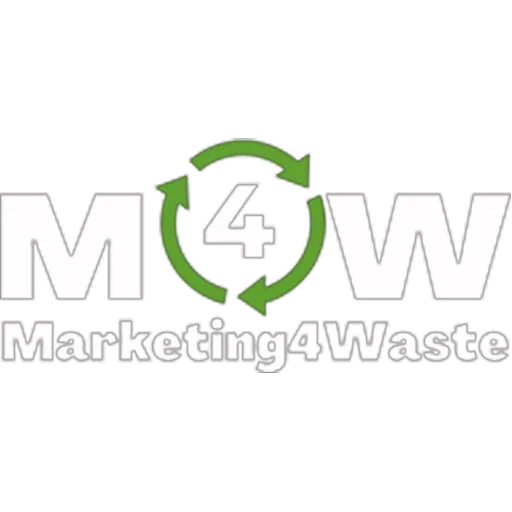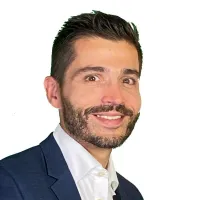Increase the Revenues of Your Waste Company With the Tips Shared in Our Blog Articles

Global Leaders Lessons: How To Leverage Extended Producer Responsibility
In the evolving landscape of waste management, Extended Producer Responsibility (EPR) has emerged as a transformative approach that shifts the burden of waste disposal from consumers and municipalities to producers.
In this article, we'll explore how three global giants—Henkel, Panasonic, and Philips—have successfully embraced EPR, detailing the volumes they manage and their innovative strategies.
As I said, they are giants, but these case studies offer valuable lessons that can be adapted to our context. They can help you align with emerging regulations and define new revenue streams for your waste management company.
Henkel: Pioneering Packaging Sustainability in Germany
Henkel, a leader in consumer goods and adhesives, has been at the forefront of Germany's Packaging Ordinance, one of the earliest and most comprehensive EPR programs globally.
Introduced in 1991, this ordinance mandates producers to take back and recycle packaging waste, creating the "Green Dot" system.
Key Strategies and Achievements:
1. Recyclable Packaging:
- Commitment to Sustainability: Henkel has committed to making 100% of its packaging recyclable or reusable by 2025. As of 2023, they have achieved approximately 85% recyclability.
- Material Use: In 2023, Henkel used around 600,000 tons of packaging materials, a significant portion coming from recycled content.
2. Material Reduction:
- Henkel continually reduces packaging material use through lightweighting and incorporating recycled content. This not only minimizes waste but also reduces production costs.
3. Consumer Education:
- Henkel actively educates consumers on proper disposal and recycling of their products, enhancing the effectiveness of their recycling initiatives.
Impact:
- High Recycling Rates: Germany’s packaging recycling rates exceed 70%, largely due to programs like Henkel's.
- Innovation and Cost Savings: By investing in sustainable packaging design, Henkel reduces material costs and meets consumer demands for eco-friendly products.
Panasonic: Leading E-Waste Recycling in Japan
In Japan, the Home Appliance Recycling Law, which was implemented in 2001, has set a high standard for EPR, particularly for electronics manufacturers like Panasonic. This law mandates that producers are responsible for the collection, recycling, and proper disposal of specified home appliances.
Key Strategies and Achievements:
1. Recycling Facilities:
- Advanced Infrastructure: Panasonic operates advanced recycling facilities in Japan, processing a wide range of appliances to recover valuable materials.
- Annual Volumes: In 2022, Panasonic recycled approximately 500,000 air conditioners, 600,000 refrigerators and freezers, 700,000 televisions, and 400,000 washing machines.
2. Design for Recycling:
- Panasonic designs products with recycling in mind, using materials that are easier to disassemble and recycle. This approach not only facilitates recycling but also reduces manufacturing complexity.
3. Take-Back Programs:
- Consumer Engagement: Panasonic offers take-back programs, encouraging consumers to return old appliances for proper recycling. This not only ensures compliance but also builds brand loyalty.
Impact:
- High Recycling Rates: Panasonic’s initiatives contribute to Japan's high recycling rates for home appliances, often exceeding 80%.
- Resource Recovery: The recovery of valuable materials like metals and plastics supports a circular economy and reduces the need for virgin resources.
Philips: Setting the Standard in the European Union
In the European Union, the Waste Electrical and Electronic Equipment (WEEE) Directive, adopted in 2003, has been pivotal in shaping EPR policies. Philips, a global health technology company, has been a leader in implementing these practices.
Key Strategies and Achievements:
1. Circular Economy:
- Commitment to Sustainability: Philips is committed to a circular economy, focusing on designing products for longevity, repairability, and recyclability.
- Recycling Volumes: In 2022, Philips collected and responsibly recycled approximately 26,000 tons of electronic waste globally.
2. Take-Back Programs:
- Philips operates extensive take-back programs across the EU, ensuring the proper collection and recycling of used electronics. These programs are supported by convenient drop-off points and partnerships with retailers.
3. Sustainable Product Design:
- Eco-Design Principles: Philips integrates eco-design principles, reducing the environmental impact of its products throughout their lifecycle. This includes using recycled materials and designing for easy disassembly.
Impact:
- Increased Collection and Recycling: Philips’ initiatives have significantly improved the collection and recycling rates of electronic waste across the EU.
- Environmental Benefits: By adopting sustainable practices, Philips reduces its environmental footprint and meets increasing regulatory and consumer demands for green products.
Takeaway Lessons for Your Waste Management Company
As waste management professionals in the US, several key takeaways from these global leaders can be adapted to enhance your operations:
1. The Importance of Recycling Infrastructure:
- Panasonic invested in state-of-the-art recycling facilities, and we know how expensive is but the infrastructure is something that can significantly improve material recovery rates and efficiency. Consider partnerships or joint ventures with other facilities to create a valuable network that you can offer to your local producers of any waste stream you are collecting. In this way you’re not only sharing the costs but you’re offering a diffused service that can make the difference for your clients.
2. Help Producers To Implement Take-Back Programs:
- Establishing take-back programs for products like those run by Philips can ensure proper recycling and disposal. That anticipates the EPR regulations in many states, which can give your company a competitive advantage in the market. Indeed, you can offer that approach to your clients. Think about Staples or Xerox; they need someone to partner with to implement the quality of their services. Why can it not be you?
3. Promote Design For Disposal:
- Work directly with local producers to design their goods in compliance with the processes you have at your plants. We’ll help you and them find the best strategic way to use secondary raw materials in their productions, and in the meantime, we’ll boost the returns for your company. Especially if you decide to partner with other plants in the area. This can include designing for easy disassembly and reducing overall material use. Henkel’s success in this area highlights the potential benefits of cost savings and its strategy to change consumers' appeal to its products.
4. Educate Consumers:
- Education is crucial. Informing your target audience about properly disposing of and recycling products can enhance recycling programs' effectiveness. The education process can follow different ways, from digital to typical ones; the most important aspect is creating all your educational materials as if you are talking to a 5-year-old child. It doesn’t matter if they are engineers or Ph.D. doctors; what matters is that they clearly understand what they have to do.
5. Leverage EPR Policies:
- Leverage EPR policies to create a competitive advantage for your waste management company, giving a solution to good producers. Indeed, your role as a waste management company owner or manager is becoming more important for the production industries: you are the bridge between the end of life of goods and the birth of new goods because you have the power to supply raw materials. It means you should work closely with good producers to create processes that simplify the work for you and them.
The circular economy is a significant business opportunity.
By learning from these global pioneers, you can create a competitive advantage for your company that will give your operation a long and fruitful success, consolidating long-term partnerships and defining a business strategy that will give a different light to your company.
To Your Success,
Sam Barrili
The Waste Management Alchemist


© 2025 Marketing4waste - All Rights Reserved,
Marketing4Waste is a brand of MiM MarketingInterimManagers LLC
+1 801 804 5730

